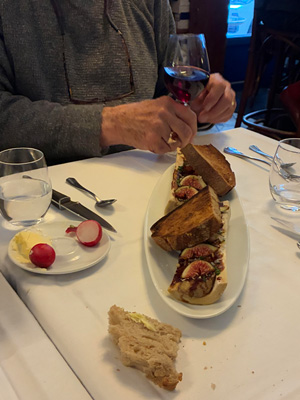 Image courtesy of Fiona McMurrey
Image courtesy of Fiona McMurrey
Over the past two decades, Paris — and much of France — has seen the rise of a culinary movement that bridges haute cuisine and casual dining: the neo-bistro. These small, chef-driven restaurants have reshaped how Parisians (and visitors) eat out, offering refined yet approachable food at prices far lower than Michelin-starred establishments.
What Exactly Is a Neo-Bistro?
A neo-bistro is a modern reinterpretation of the classic bistrot — the cozy neighborhood spot where locals gather for hearty, affordable meals. What sets neo-bistros apart:
-
Young, ambitious chefs: Many trained in Michelin-starred kitchens but wanted to escape the formality and high costs of fine dining.
-
Seasonal, market-driven menus: Dishes change daily, reflecting what’s fresh and available.
-
Minimalist settings: Think wooden tables, chalkboard menus, and an unfussy vibe.
The Movement’s Origins
The term was popularized in the early 2000s, thanks to chefs like Yves Camdeborde (Le Comptoir du Relais) and Inaki Aizpitarte (Le Chateaubriand). They proved that excellent cooking could thrive outside the white-tablecloth world.
What’s on the Plate
Expect dishes that are creative but not intimidating:
-
Perfectly seared meats with seasonal vegetables
-
Inventive small plates meant for sharing
-
Natural wines that complement bold flavors
This mix has attracted a younger, more adventurous clientele eager for culinary experimentation.
Democratizing Good Food
Neo-bistros have made high-quality dining more accessible. A three-course lunch menu might cost €25–€35 — a fraction of what you’d pay at a gastronomic palace. The informal atmosphere encourages conversation and makes fine dining less intimidating.
A Ripple Effect Across France
The trend started in Paris but quickly spread to Lyon, Marseille, and even rural towns. Today, many French cities boast their own generation of neo-bistro chefs, making local dining scenes more dynamic.
Why It Matters
The rise of neo-bistros represents a shift in how the French think about dining out:
-
From status symbol to everyday pleasure
-
From rigid tradition to culinary creativity
-
From formality to conviviality
In many ways, neo-bistros have become the heartbeat of modern French gastronomy — where innovation meets accessibility.